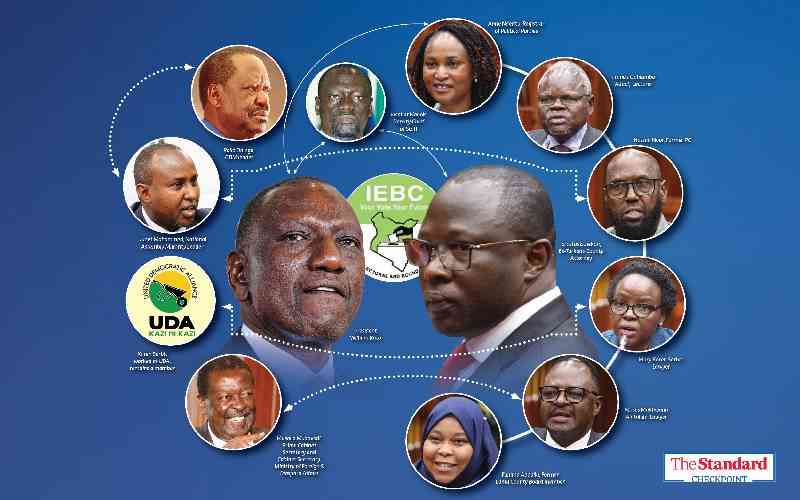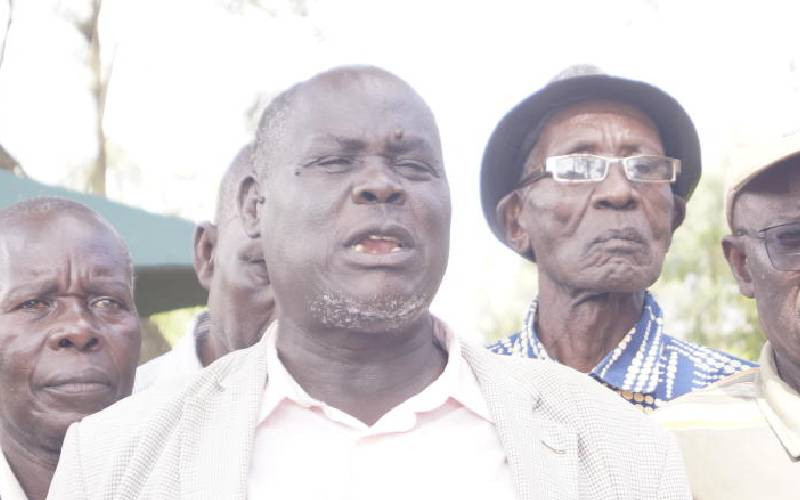The government is paying for the resettlement plunder of allowing families to occupy parts of the Eastern Mau Forest in the 1990s.
The government’s decision to excise 35,301 hectares from the Mau Forest in 2001 has led to prolonged legal battles. In what seemed to have been an acknowledgment of a potential misstep in opening forest land for settlement, the government has been trying to reverse the situation through mass evictions to pave the way for conservation.
But the court ruling on September 30, 2024, upheld the legality of the 2001 cutline. And now the government has started implementing the long-awaited process of redrawing and beaconing the boundaries to separate forests and settlements of the six schemes created following the 2001 decision.
Two weeks ago, the State Departments for Lands and Physical Planning, Environment and Climate Change, Water and Sanitation, Kenya Forest Service, and the Ministry of Interior started undertaking a three-week beaconing exercise within the chunk of land that led to the establishment of schemes including Marioshoni, Nessuit, Sururu, Likia, Sigotik, and Teret.
“We want to know the exact boundaries so that we can live in peace. We have always been on the lookout because the government keeps telling us that we intrude on the forests,” Milka Chepkoech said.
The controversial Eastern Mau land issues are a culmination of cases that led to the designation of thousands of hectares as settlement schemes in 1997, where the settlers were subsequently granted title deeds.
In January 2001, the government issued a Gazette that signalled an intention to formally alter the forest boundary while regularizing the existing settlements. The government aimed at legitimizing what had occurred – the establishment of settlements within the forest before any official boundary changes.
However, the government has previously argued that the process of allocating land in 2001 was not legally complete, hence rendering the title deeds issued at the time invalid. The settlers who are holding official documents claiming ownership, on the other hand, have been battling with the government, which asserts the documents have no legal standing.
“We went to court to challenge the decision by the government to evict people from the lands where they were settled. Why would the government forcefully evict people with legal documents they provided?” said one of the petitioners, Nessuit MCA Samuel Tonui.
He said that the use of the 2001 map will show the list of people who were settled legally when the government opened up the area for settlement.
“People living here can now develop their parcels of land, which have been under caveat for the longest time,” said Tonui.
These schemes have since become a centre of controversy due to unclear boundaries. While the settlers claim that eviction notices issued to them to vacate the forests in 2019 altered the 2001 boundaries of the Eastern Mau Forest, the government seems to have changed its mind.
Eastern Mau forms part of the 21 forest blocks in Mau Forest managed by the Kenya Forest Service. A series of evictions have been undertaken in the forest block due to increased cases of encroachment and heavy deforestation.
But the mass evictions to restore the pre-settlement status quo have proved futile, given the thousands residing in established schemes and existing court cases.
Stay informed. Subscribe to our newsletter
In August 2019, the government launched a series of evictions, targeting individuals and communities living within the forest boundaries. The evictions, the government had said, were part of a larger effort to save the forest from deforestation and encroachment. The evictions were carried out forcefully, destroying homes and property.
Given that the government has been focusing on evicting those settled within the schemes without comprehensive resettlement plans, the land issues in Mau have continued to deepen.
Although the process currently taking place in Eastern Mau has been embraced by a section of settlers, the Ogiek community members feel like the process is flawed.
“Given that some court orders override other orders that were previously delivered, it makes it hard for us to understand what is happening. We have an African Court ruling that is yet to be implemented, and we do not know where the current demarcation of boundaries is placing us,” said Filax Sembui, a member of the Ogiek community.
In the September 2024 judgement, Environment and Lands Court Judge Justice J M Mutungi ordered that the residents whose land ownership rights were left in jeopardy for decades by an Executive decision in 2019, which contradicted a 2001 Legal Notice specifying the boundaries, should have their rights restored. The case concerned multiple consolidated petitions challenging evictions from the Mau East Forest Complex.
Justice Mutungi said the residents had sufficiently proved that they were rightful owners and occupants of the pieces of land allocated to them after the government excised land for the settlements through a legal process.
The Judge said the Legal Notice No. 142 of October 8, 2001, which was never revoked, should be implemented.
He directed the Government to, within 12 months from the date of the Judgment, establish and delineate the forest boundaries within the Settlement Schemes by placing physical and visible beacons on the ground.
Njoro Deputy County Commissioner Mokin Ptangwany said that those residing inside the forests after the redrawing of the boundaries will be flushed out.
“The courts directed that those who would be found within the forest be forcibly moved out. By the time the exercise is complete, those residing illegally in the forest should have moved out,” said Ptangwany.
Mauche MCA Moses Koros described the moment as a milestone for communities who have been in limbo following years of frustration and exclusion from development opportunities.
“We have been yearning for this for years, moving from one office to another seeking justice. Without title deeds, we could not access loans like others. Now we can catch up economically like the rest,” said Koros.
While recognising the vital need for forest preservation, the court cautioned against actions that, in the pursuit of environmental protection, could trigger a humanitarian crisis, swelling the numbers of internally displaced persons.
But the court also acknowledged the global toll of human activity on the environment, noting that Kenya has not escaped the impacts of climate change. The court observed that any undertaking with the potential to harm the environment demands rigorous scrutiny and mitigation. It noted that the allocation of Eastern Mau Forest land for settlements undeniably compromised the Mau Forest Complex’s crucial role as a water catchment area and proposed measures to restore tree cover as a mitigation effort against deforestation caused by human settlement in former forest land.
In September, the court noted that it lacked the jurisdiction to compel the government to enforce decisions of the African Commission, highlighting the Commission’s own capacity for enforcement as demonstrated in the reparation’s judgment, which outlined specific remedies and timelines for the state.

























